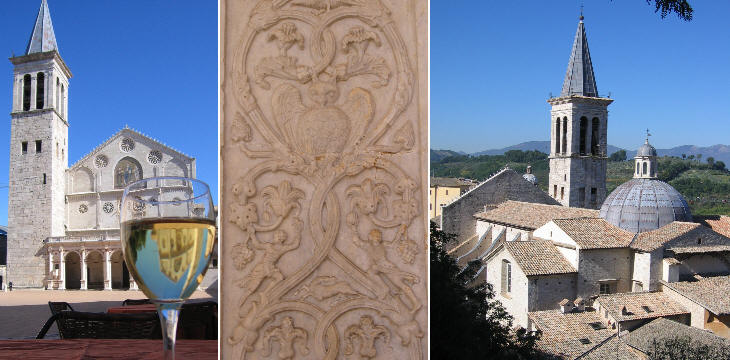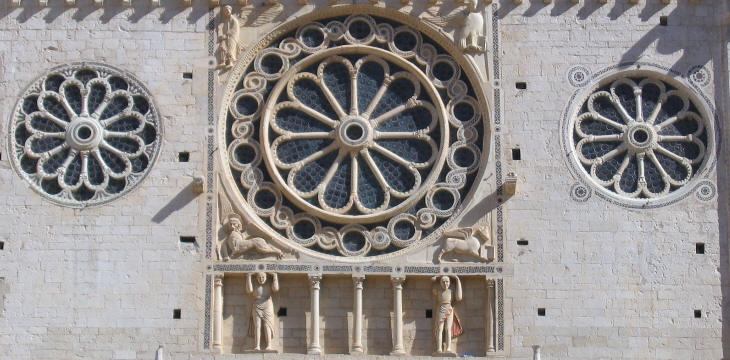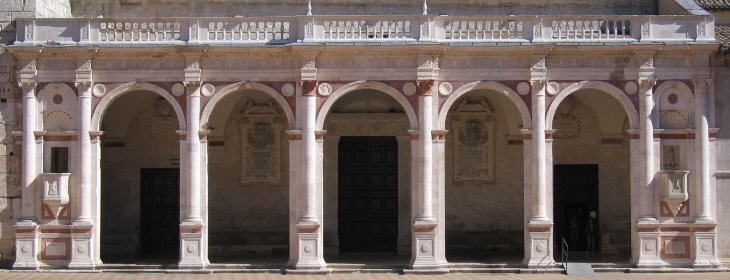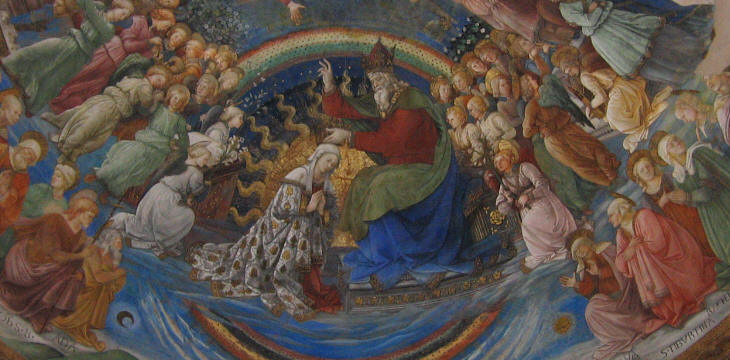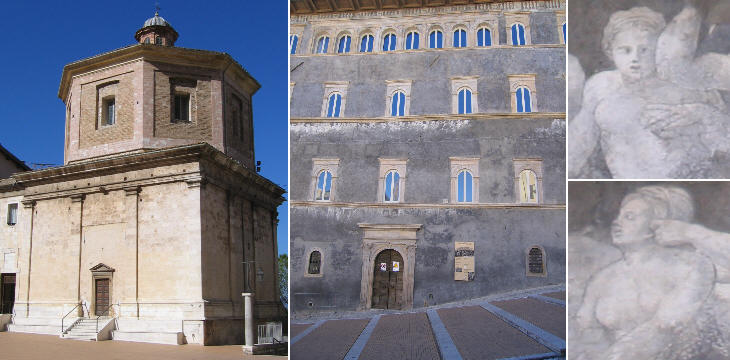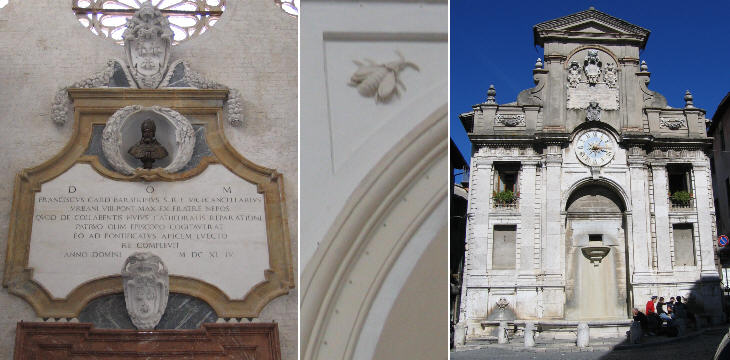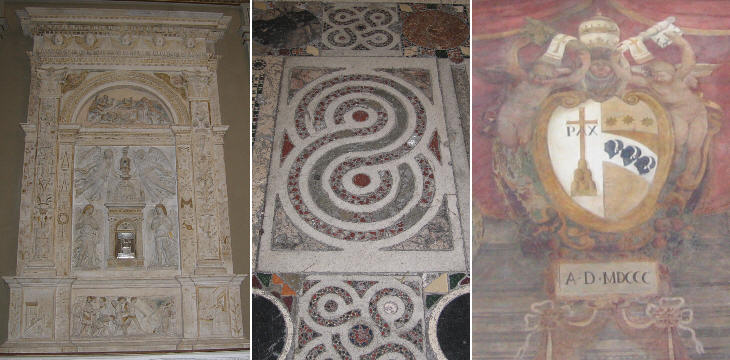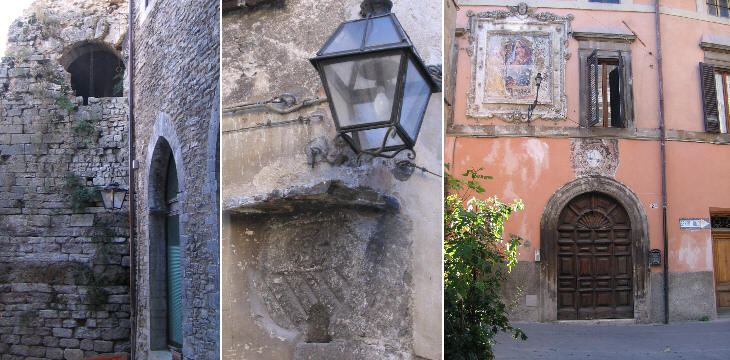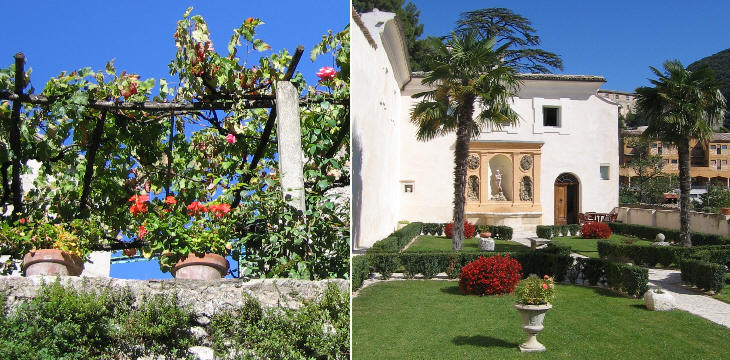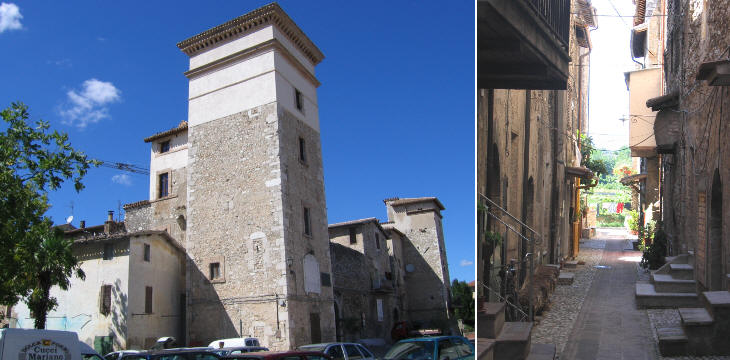  What's New! Detailed Sitemap All images © by Roberto Piperno, owner of the domain. Write to romapip@quipo.it. Text edited by Rosamie Moore. Page added in November 2006. |
Everyday a train leaves Termini: first stop: Orte; second stop: Narni; third stop Terni; fourth stop ... 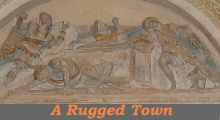 Spoleto Spoleto(relief of a tabernacle in S. Gregorio Maggiore) The cathedral of Spoleto was built at the end of the XIIth century on an existing Roman terrace in the upper part of the town. It was consecrated in 1198 by Pope Innocent III.
The cathedral is a sort of summary of Italian art as its original Romanesque structure was modified through the centuries. In particular in 1644 Luigi Arrigucci, architect of the Papal State, renovated the interior and built the dome: this explains why there is so little consistency between the shape of the fašade and that of the interior.
The upper part of the fašade retains its original decoration with the symbols of the Evangelists and a fine Cosmati decoration.
The portico was added towards the end of the XVth century: on the sides there are two elegant pulpits: they did not serve only a religious purpose, as they were used also during the public assemblies which were held in the square in front of the cathedral: for this reason the large street leading to it is called Via dell'Arringo (harangue).
The Baroque renovation of the interior was careful not to damage the large frescoes which are the last work of Filippo Lippi (1406-69), one of the main Florentine painters of the XVth century.
Spoleto has other interesting Renaissance monuments: both S. Maria della Manna d'Oro and Palazzo Arroni were built in the XVIth century: according to the tradition the graffiti of Palazzo Arroni were painted by Giulio Romano (1499-1546), a scholar of Raphael.
Spoleto was one of the main towns of the Papal State: its bishop was often a cardinal. Pope Leo XII (1823-29) belonged to an important family of Spoleto. Pope Urban VIII was celebrated by a large inscription in the cathedral and his bees decorate the pillars: his coat of arms appears also on a fountain in the market square which was built at a later stage: the clock has the shape of a sun, another heraldic symbol of the pope (for another Baroque fountain in Spoleto click here). Wandering in the streets of Spoleto
S. Giacomo di Spoleto
The plan devised by Cardinal Gil de Albornoz to restore the papal authority was not limited to building fortresses to control the insubordinate towns of the Papal State: he wanted to have a grip on the countryside too: for this reason he forced the farmers in the valley to live in fortified villages. S. Giacomo, one of these villages, a few miles north of Spoleto, retains the rectangular structure of its old fortifications, with high towers at each corner. The image in the background of this page shows a relief near the cathedral portraying a knight, symbol of Spoleto. Return to page one or move to Trevi. 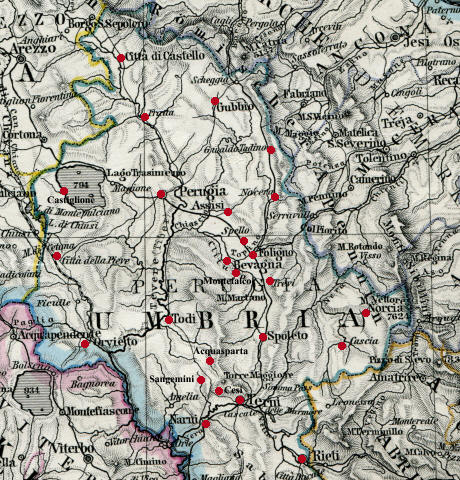
1864 clickable map of Umbria |
